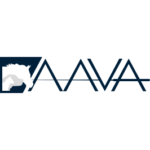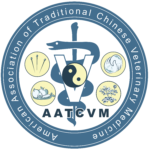Peer Review Process
- Articles are sent to two TCVM experts selected from the AJTCVM Scientific Review Board, Assistant Editors, Advisory Board or independent experts with specialized expertise by the Editor-in-Chief.
- Reviewers evaluate the study design and execution, accuracy of results and contribution to the literature.
- Reviewer comments are combined to maintain the anonymity of the reviewers and the manuscript is returned to the author for revisions, unless it has been rejected.
- Authors who disagree with the reviewers’ comments or the rejection of the manuscript can submit a rebuttal, citing references in the literature to support their view, to the Editor-in-Chief at: saikj@ajtcvm.org.
- If provisional acceptance based upon manuscript revision is obtained, the manuscript must be revised and a second review process is then undertaken with the same or additional reviewers, if necessary.
- If one reviewer accepts a manuscript and another rejects it, a third reviewer will be used to unknowingly make the final decision.
General Instructions for Conducting the Peer Review
These are general suggestions when reviewing a paper; not all of these will apply to every paper.
- Refer to this document and look at the category requirements for the paper you are reviewing (i.e. Pearls for the Practitioner)
- Is the manuscript appropriate and a good contribution to its category?
- Does the “Abstract” give a concise summary of what was presented in the paper?
- Does the “Introduction” clearly announce the topic and suggest the approach that will be taken?
- Are important and interesting ideas presented (are they clear and understandable)?
- Is the main point(s) clear and interesting?
- Is there a clear focus (or does the paper seem to wander)?
- Is the manuscript effectively organized?
- Is the sequence of events in the paper organized in a logical fashion for the reader?
- Are ideas adequately developed?
- For experimental data: Is the manuscript convincing in its proof of the hypothesis to be proved?
- Do clinical studies have convincing “evidence based medicine” that support clinical results?
- After reviewing the paper, praise anything that works really well and comment specifically on any important issues you feel should be addressed more clearly or completely.
- If no major issues are found, go to smaller issues (awkward or confusing sentences, style, grammar, word choice, etc.)
- Time is limited (for your response and for the author’s revision), so concentrate on the most important ways the draft could be improved
- Finally, put the paper into 1 of three categories and inform the editor:
The paper is accepted.
The paper has provisional acceptance (based on addressing deficiencies).
The paper is rejected.
SEQUENCE OF PUBLICATION
The AJTCVM is published by the American Association of Traditional Chinese Veterinary Medicine and the World Association of Traditional Chinese Veterinary Medicine, PO Box 141324, Gainesville, FL 32614. It is published biannually in February and August. The deadline for manuscripts is: February 1st (for the August issue) and August 1st (for the February issue). Articles are published within six months or less of acceptance.
BASIS FOR DECLINING PUBLICATION
A manuscript may be declined by the Editor-in-Chief and Executive Editors when initially submitted and not submitted for peer review (desk rejection). Only manuscripts reporting some aspect of TCVM or traditional Chinese medicine (TCM) will be considered for publication in the AJTCVM. All manuscripts submitted must not have been published elsewhere in English or submitted or published elsewhere while under consideration for acceptance by the AJTCVM. Manuscripts, without a TCVM or TCM focus or in a format or style with grammar unsuitable for the AJTCM, will be declined for publication. Manuscripts that contain information that suggests that animals have been subjected to adverse, stressful or harsh conditions or treatments will not be considered for publication by the AJTCVM.
AJTCVM may also decline a manuscript after completion of the formal review process. Manuscripts that do not meet the standards of the journal will be returned to the authors by the Editor-in-Chief with comments describing the basis for the decision. Manuscripts may be rejected if the findings are not well-supported by the data, do not provide significant new insights, are not sufficiently novel, do not contain enough new information and/or are too preliminary to warrant publication.
Authors who disagree with the reviewers’ comments or the rejection of their manuscript can submit one rebuttal to the Editor-in-Chief citing references in the literature to support their view. The Editor-in-Chief and Associate Editors will make a final decision based on the new information provided by the author. If a manuscript is rejected at this stage, the decision is final and no further appeals will be reviewed. Any concerns or questions about future submissions may be sent directly to the Editor-in-Chief.
RESPONSIBILITIES AND DISCLAIMER
- Any statements expressed in the Journal are those of the individual authors and do not necessarily represent the views of the of the AJTCVM, the American Association of Traditional Chinese Veterinary Medicine (AATCVM), the American Academy of Veterinary Acupuncture (AAVA), the World Association of Traditional Chinese Veterinary Medicine (WATCVM) or the International Veterinary Acupuncture Society (IVAS), which take no responsibility for any statement made.
- References to a specific method, product, process or service made in an article do not constitute or imply an endorsement, recommendation, or warranty thereof by AATCVM, AAVA, WATCVM or IVAS.
- The materials published in the AJTCVM are for general information only and do not represent a standard of AJTCVM, AATCVM, AAVA, WATCVM, or IVAS, nor are they intended for use as a reference in purchase specifications, contracts, regulations, statutes or any other legal document.
- Although this is a peer-reviewed journal, neither AJTCVM, AATCVM, AAVA, WATCVM, IVAS nor any peer, individually makes any representation or warranty of any kind, whether expressed or implied, concerning the accuracy, completeness, suitability or utility of any information, apparatus, product or process discussed in this publication and assumes no liability therefore.
- The information published in AJTCVM should not be used without first securing competent advice, with respect to its suitability for any general or specific applications.
- Any person utilizing information published in AJTCVM assumes all liability arising from such use, including, but not limited to, infringement of any patent or patents.
- With respect to all articles, works or other materials presented to the Editorial Board of AJTCVM, the AJTCVM reserves the right to alter or amend the presentation of an article to fulfill its journalistic needs and the risk of any claimed loss as a consequence of such action, omission, amendments or alterations by the AJTCVM editors is and remains solely upon those submitting the material for publication.





